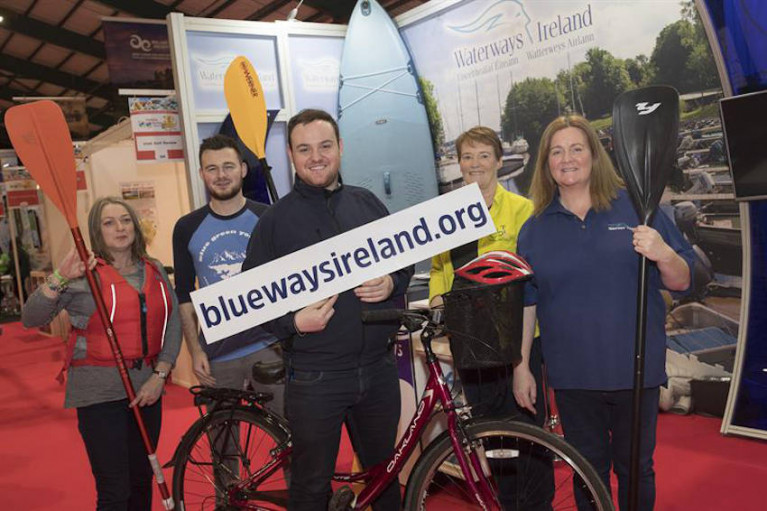Displaying items by tag: Blueways Ireland
Three "Blueways" Across Four Counties are "First in World" to be Accredited - Fáilte Ireland
Three “blueways” developed across four Irish counties are “the first in the world” to be accredited as such, Fáilte Ireland says.
“Blueways” encourage the use of lakes, canals, rivers and coastal environments for walking, cycling, swimming, kayaking, stand up paddleboarding while engaging with nature and heritage.
The Boyne Blueway, Suir Blueway Tipperary and Lough Derg Blueway have been opened this week, following their accreditation.
Fáilte Ireland says its research shows that 73%* of domestic tourists engaged in outdoor activities on their most recent overnight trip, ranging from walking and hiking, to swimming, kayaking and canoeing.
It says official accreditation of “blueways” responds to this growing public demand for quality outdoor infrastructure close to water and nature.
The “blueway” accreditation has been developed by Fáilte Ireland, Sport Ireland, Waterways Ireland, Sport Northern Ireland and Tourism Northern Ireland. The aim is to “ensure a consistent high standard from a technical and safety perspective” and to “deliver best in class sustainable visitor experiences”, the tourism body says.
“Under the Programme for Government, we committed to investing in and promoting “blueways” and recreational trails for the benefit of local communities and tourists alike,” Minister for Tourism Catherine Martin said.
She said they would open up counties Meath, Tipperary, Clare and Galway to water-based and water-side activities.
“The “blueways” partnership is an important cross-border initiative that will .... help position the island of Ireland as a world-class activities tourism destination for visitors,” she said.
Blueways Ireland Launches New Website At Holiday World This Weekend
Blueways Ireland launches its newly upgraded website this weekend during the Holiday World show in the RDS.
The site offers, maps and information on where to stay, eat and the exciting outdoor experiences available on the Shannon Blueway, Lough Derg Blueway and the Shannon-Erne Blueway.
Find inspiration for family-friendly short breaks and more with Blueways Ireland’s partners Waterways Ireland on stand Q7 at Holiday World, which runs until tomorrow, Sunday 26 January.
While there you can meet cruising and activity providers from all over Ireland’s inland waterways and find out more about the newest activities, boats and itineraries for the 2020 season.
What’s more, VR goggles will make it seem like you are really there so you can get a virtual sense of the on the water, by the water experience.
Inspirational packs featuring the best waterway locations for on-the-water fun, food and family time can be picked up on the stand.
And you can enter competitions each day with prizes including glamping, canoe trips, SUP and cycle trips, and discounts on barge hire. Terms and conditions will apply and the winning entries will be pulled at the end of the show.
























































